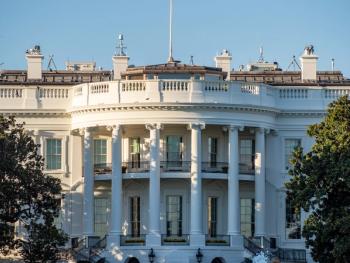
Mass General Brigham’s first chief medical officer wants to go big
Thomas Sequist explains why his mission to improve health equity is very personal.
Thomas D. Sequist has focused on improving health equity at Mass General Brigham, and his newly expanded role offers more opportunities to make progress.
In February, Sequist was named Mass General Brigham’s first chief medical officer. He previously had been the chief patient experience and equity officer.
In an interview with Chief Healthcare Executive, Sequist talked about his desire to go big, expanding access and equity in treatment and how his experience as a Native American makes his quest to improve health equity very personal.
“I take to heart the notion that we are putting equity first in everything we do,” Sequist said.
“If we don’t start with that, we will find ourselves playing catchup with equity in the long run.”
Sequist, a primary care physician, has been with the system since 1999. He has credited as being a driving force behind Mass General Brigham’s United Against Racism initiative.
The system is investing millions of dollars to improve diversity on the staff and improve patient care with more access to translators, the better collection of racial data in clinical trials, and forming racial equity projects in clinical departments.
The COVID-19 pandemic vividly illustrated disparities in healthcare and outcomes among racial groups. Black, Hispanic, American Indian and Alaska Native individuals are twice as likely to die of COVID-19 than white patients, according to
'It's very personal'
The pandemic and the outrage over the murder of George Floyd sparked demands for justice and removing inequities in the healthcare system, Sequist said.
The dramatic expansion of telehealth early in the COVID-19 pandemic has turned out to be a game-changer. But the expansion of telehealth also revealed inequities in access to healthcare, Sequist said.
“We saw very quickly that not all of the entire population had access to video technology,” Sequist said. A recent
To reach out to more patients in minority communities, Mass General Brigham launched an initiative to get more patients in the electronic patient portal, including employing more digital navigators to help patients. Over the last 18 months, the system has seen "a dramatic increase" of Black and Latino patients in the portal, Sequist said.
Mass General Brigham also rolled out mobile vans to deliver care for COVID-19 patients. The system also expanded its home-based program as well.
A member of the Taos Pueblo tribe in New Mexico, Sequist said he has seen friends and family members in tribal communities who have seen dramatic inequities in healthcare. Roughly one-third of those living in American Indian communities lack access to electricity or indoor plumbing.
His life experiences fuel his passion for health equity.
“It’s very personal to me,” he said.
“It drives me every day down this road.”
Sequist has done healthcare policy research centered on indigenous Americans. In 2020, he testified before Congress about the pandemic’s disproportionate impact on Native Americans, including a lack of testing and shortages of personal protective equipment.
He sees a common link between the inequities in American Indian tribal communities and the disparities he sees in Boston. “The underlying commonality is structural racism and poverty,” he said.
The connection between
'This is our moment'
Healthcare leaders, including Sequist, said developing a more diverse workforce of doctors and nurses is a critical step toward reducing disparities in care.
Even with more attention to the issue in recent years, there isn’t a big pool of Black and Latino physicians. Only 5% of the nation's doctors are Black, and only 5% of the country’s physicians are Hispanic, according to
“This is a big problem that’s going to take decades to make a lasting impact on,” Sequiest said. “We have to be patient and we have to not be afraid of going big.”
Healthcare systems have to address it in their governance, and that includes giving people driving the equity agenda the ability to make key decisions.
"We have made little progress as a healthcare educational system in cultivating a group of diverse healthcare leaders and professionals," Sequist said.
Equity can’t be something that’s “nice to have” if there are sufficient resources, he said.
In his expanded role, Sequist will also be looking at ways to reduce
The system is looking at ways to bolster the workforce, and at the same time looking at ways to reduce the adversity clinicians are facing.
Some of it involves the transition to digital workflows. While patients trying to reach a doctor on the phone will be directed to a phone bank staffed by employees, plenty of emails end up going directly to physicians.
“We haven’t created the workflows to support our workforce in this digital age,” Sequist said.
After two years of dealing with the COVID-19 pandemic, many doctors and nurses are dealing with “pure fatigue," he said. About 18% of healthcare workers have left the industry during the pandemic, according to a
“This has been a very trying couple of years,” Sequist said.
Even with the difficulties of the last two years, Sequist spoke with unabashed enthusiasm about his new role and the chance to have a greater impact in making healthcare accessible to all.
“This is our moment,” he said. “When these moments come, you have to take action.”
More from Chief Healthcare Executive








































